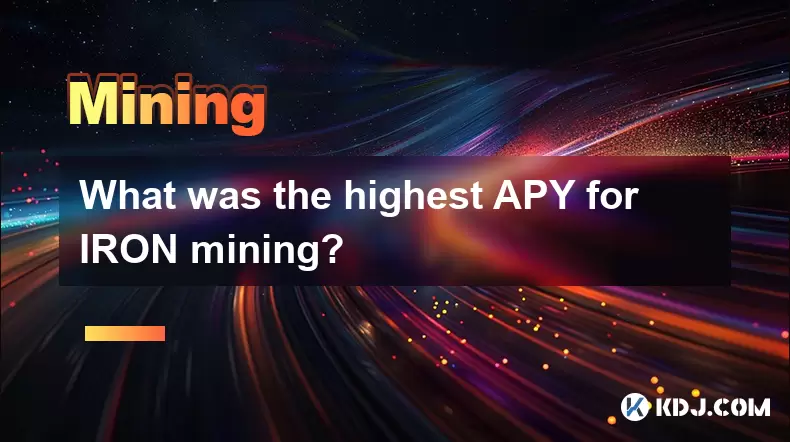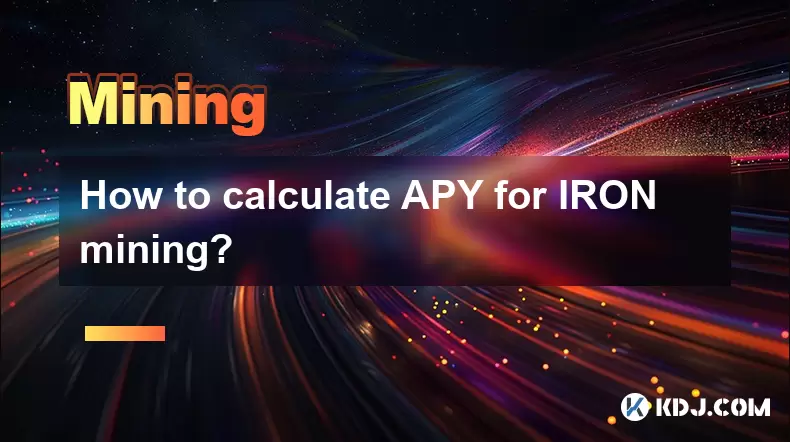-
 Bitcoin
Bitcoin $114200
0.00% -
 Ethereum
Ethereum $3637
0.56% -
 XRP
XRP $2.950
-2.01% -
 Tether USDt
Tether USDt $0.9999
0.02% -
 BNB
BNB $761.0
0.55% -
 Solana
Solana $164.1
-1.38% -
 USDC
USDC $0.9999
0.02% -
 TRON
TRON $0.3332
0.36% -
 Dogecoin
Dogecoin $0.2012
-0.52% -
 Cardano
Cardano $0.7261
-1.41% -
 Hyperliquid
Hyperliquid $37.62
-2.13% -
 Stellar
Stellar $0.3930
-2.65% -
 Sui
Sui $3.441
-0.16% -
 Bitcoin Cash
Bitcoin Cash $563.8
0.70% -
 Chainlink
Chainlink $16.50
0.09% -
 Hedera
Hedera $0.2424
-0.14% -
 Ethena USDe
Ethena USDe $1.001
0.01% -
 Avalanche
Avalanche $22.20
0.00% -
 Litecoin
Litecoin $118.0
-2.48% -
 UNUS SED LEO
UNUS SED LEO $8.991
0.12% -
 Toncoin
Toncoin $3.195
-3.87% -
 Shiba Inu
Shiba Inu $0.00001217
0.12% -
 Uniswap
Uniswap $9.674
-0.21% -
 Polkadot
Polkadot $3.633
1.00% -
 Monero
Monero $295.3
-0.82% -
 Dai
Dai $0.9999
0.00% -
 Bitget Token
Bitget Token $4.321
-0.41% -
 Cronos
Cronos $0.1392
0.73% -
 Pepe
Pepe $0.00001027
-0.89% -
 Aave
Aave $258.5
0.32%
How to improve the computing power of mining equipment for FIL mining?
Filecoin mining prioritizes reliable, large-scale storage; success depends on optimizing storage infrastructure (high-quality HDDs, RAID), efficient software (updates, network stability), and a powerful CPU/RAM for the sealing process, not raw computing power.
Mar 23, 2025 at 11:14 pm

How to Improve the Computing Power of Mining Equipment for FIL Mining?
Filecoin (FIL) mining, unlike Bitcoin mining which relies on ASICs, utilizes a storage-based proof-of-replication consensus mechanism. This means computing power, in the traditional sense, isn't the primary factor determining mining success. Instead, effective FIL mining hinges on providing and proving access to large amounts of reliable, consistently available storage. Therefore, improving "computing power" in the context of FIL mining means optimizing your storage infrastructure and the efficiency of your mining software.
One crucial aspect is maximizing storage capacity. More storage directly translates to more potential rewards. This involves acquiring more hard drives or utilizing higher-capacity drives. However, simply adding more storage isn't enough; data integrity and accessibility are paramount.
- Choose high-quality hard drives: Opt for enterprise-grade hard drives designed for 24/7 operation. Consumer-grade drives are prone to failures, leading to lost data and reduced rewards.
- Employ Redundancy: RAID configurations (like RAID 6 or RAID 10) protect against drive failures. Data redundancy ensures that even if a drive fails, your mining operation won't be significantly impacted.
- Optimize your storage infrastructure: Consider using specialized storage servers or network-attached storage (NAS) devices for better management and performance. These often provide features like hot-swapping, simplifying drive replacements.
Beyond the raw storage capacity, the efficiency of your mining software plays a significant role. Properly configured and maintained software ensures your storage is utilized effectively and reports accurately to the Filecoin network.
- Regular software updates: Keep your mining software updated to benefit from bug fixes, performance improvements, and new features that might increase efficiency.
- Proper network configuration: A stable and high-bandwidth network connection is crucial for communication with the Filecoin network. Network latency can negatively impact your sealing process.
- Monitor your hardware: Regularly monitor your hard drive temperatures, health, and performance metrics. This allows for proactive maintenance and prevents unexpected failures. Tools provided by your chosen mining software can help with this.
Another area to consider is the efficiency of the sealing process. Sealing is a computationally intensive process where you prove you have the data stored. While not directly "computing power" in the traditional sense, optimizing this step significantly impacts your mining rewards.
- Use powerful CPUs and sufficient RAM: The sealing process demands significant CPU power and RAM. Upgrading these components can shorten sealing times and allow you to seal more often.
- Consider dedicated sealing hardware: For large-scale operations, dedicated sealing hardware might be beneficial. This could involve using specialized servers or even GPU acceleration, though this is still a developing area for FIL mining.
- Optimize your sealing parameters: The parameters you use for sealing can impact both speed and resource consumption. Experimenting (within safe limits) might uncover optimal settings for your specific hardware.
The network's overall health and competition also influence your effective computing power. The more miners on the network, the more challenging it becomes to earn rewards.
- Stay informed about network changes: Filecoin's protocol and parameters are subject to change. Staying updated helps you adapt your strategies and maintain competitiveness.
- Monitor network conditions: Periods of high network congestion can impact sealing times and rewards. Being aware of these fluctuations helps in managing expectations.
- Consider joining a mining pool: Pooling resources with other miners can provide more consistent rewards and reduce the impact of network fluctuations.
Improving the “computing power” of your FIL mining setup isn't about clock speeds or GPU hashes. It’s about maximizing storage capacity, optimizing storage infrastructure, ensuring data integrity, and efficiently managing the sealing process. A combination of high-quality hardware, well-maintained software, and a strategic approach to network participation are key to success in Filecoin mining.
Frequently Asked Questions:
Q: Can I use SSDs for FIL mining?
A: While SSDs offer faster read/write speeds, their limited storage capacity and higher cost per gigabyte make them less economically viable than HDDs for large-scale FIL mining. SSDs might be useful for caching frequently accessed data but aren't a primary storage solution.
Q: What is the optimal RAID configuration for FIL mining?
A: RAID 6 or RAID 10 are generally recommended. RAID 6 provides redundancy against two drive failures, while RAID 10 offers a balance between speed and redundancy. The best choice depends on your specific needs and tolerance for downtime.
Q: How much RAM do I need for efficient FIL sealing?
A: The RAM requirements for sealing depend on the size of your sectors. Larger sectors require more RAM. It's recommended to have ample RAM to avoid swapping to disk, which significantly slows down the sealing process. Start with at least 32GB and consider more for larger operations.
Q: Can I use GPUs for FIL mining?
A: While GPUs aren't currently the primary driver of FIL mining performance like they are in some other cryptocurrencies, some research explores GPU acceleration for certain aspects of the sealing process. However, the primary bottleneck remains storage capacity and efficiency.
Q: What are the risks associated with FIL mining?
A: Risks include hardware failures, network congestion, protocol changes impacting rewards, and the inherent volatility of cryptocurrency prices. Proper hardware maintenance, software updates, and diversification of investments are crucial for mitigating these risks.
Disclaimer:info@kdj.com
The information provided is not trading advice. kdj.com does not assume any responsibility for any investments made based on the information provided in this article. Cryptocurrencies are highly volatile and it is highly recommended that you invest with caution after thorough research!
If you believe that the content used on this website infringes your copyright, please contact us immediately (info@kdj.com) and we will delete it promptly.
- Fast-Moving Cryptos: Could Pudgy Penguins Deliver High Gains by 2025?
- 2025-08-06 16:30:11
- Crypto Gaming Tokens: August 2025 Investment Opportunities
- 2025-08-06 16:50:12
- Flipster, Kaia, and Stablecoin Access: Bridging Crypto to Everyday Life in Asia
- 2025-08-06 16:50:12
- Superp ($SUP) Takes Flight on Binance Alpha: A New Era for On-Chain Perpetual Trading
- 2025-08-06 16:30:11
- Nissan Magnite Kuro: India's Black Edition Steals the Show
- 2025-08-06 16:56:02
- MYX Token's Crypto Shift: A Potential Trap for the Unwary?
- 2025-08-06 16:56:02
Related knowledge

What was the highest APY for IRON mining?
Jul 23,2025 at 05:14am
Understanding IRON Token and Its Mining MechanismThe IRON token is a stablecoin that operates within the Iron Finance ecosystem, primarily on blockcha...

What is impermanent loss in IRON pools?
Jul 23,2025 at 09:00am
Understanding Impermanent Loss in the Context of IRON PoolsImpermanent loss is a phenomenon that affects liquidity providers in decentralized finance ...

How to claim rewards from IRON mining?
Jul 23,2025 at 02:21pm
Understanding IRON Mining and Reward MechanismsIRON Finance operated as a decentralized finance (DeFi) protocol on the Polygon and Binance Smart Chain...

How to claim rewards from IRON mining?
Jul 29,2025 at 05:07am
Understanding IRON Mining and Reward MechanismIRON is a dual-token system designed to stabilize the value of a synthetic asset through a combination o...

IRON mining tutorial for beginners
Jul 27,2025 at 12:01am
What Is IRON and How Does It Work in the Cryptocurrency Ecosystem?IRON is a cryptocurrency token that operates on the Binance Smart Chain (BSC) and is...

How to calculate APY for IRON mining?
Jul 28,2025 at 09:49am
Understanding APY in the Context of IRON Token MiningWhen engaging in IRON token mining within decentralized finance (DeFi) platforms, Annual Percenta...

What was the highest APY for IRON mining?
Jul 23,2025 at 05:14am
Understanding IRON Token and Its Mining MechanismThe IRON token is a stablecoin that operates within the Iron Finance ecosystem, primarily on blockcha...

What is impermanent loss in IRON pools?
Jul 23,2025 at 09:00am
Understanding Impermanent Loss in the Context of IRON PoolsImpermanent loss is a phenomenon that affects liquidity providers in decentralized finance ...

How to claim rewards from IRON mining?
Jul 23,2025 at 02:21pm
Understanding IRON Mining and Reward MechanismsIRON Finance operated as a decentralized finance (DeFi) protocol on the Polygon and Binance Smart Chain...

How to claim rewards from IRON mining?
Jul 29,2025 at 05:07am
Understanding IRON Mining and Reward MechanismIRON is a dual-token system designed to stabilize the value of a synthetic asset through a combination o...

IRON mining tutorial for beginners
Jul 27,2025 at 12:01am
What Is IRON and How Does It Work in the Cryptocurrency Ecosystem?IRON is a cryptocurrency token that operates on the Binance Smart Chain (BSC) and is...

How to calculate APY for IRON mining?
Jul 28,2025 at 09:49am
Understanding APY in the Context of IRON Token MiningWhen engaging in IRON token mining within decentralized finance (DeFi) platforms, Annual Percenta...
See all articles

























































































